Help your students to develop a conceptual understanding of measurement with this four week measurement unit! Fourth Grade Math Unit 8 Students will develop an understanding of measurement and general number sense. The unit allows students to understand how to measure and draw angles with a protractor, that angles are additive, the concept of area and perimeter, how to convert multiple units of measure, and how to represent data with a line plot.
This individual unit is also available in my 4th Grade Math Bundle.
This product includes four weeks of math instruction that is written in an easy to follow format. The lessons are written to give students a solid foundation of the concept of decimals through engaging and hands-on lessons. In this unit you will find performance tasks to conceptually teach new skills through the workshop model, as well as work station activities, decimal printables, and two booklets.
What’s Included?
- Unit at a Glance
- 20 Lesson Plans that include performance tasks
- 20 Skill Building Worksheets
- Answer Keys
Table of Contents
Pg. 3 Teacher Notes & Unit at a Glance
Pg. 4-5 Lesson 1-Measuring Angles
Pg. 6-7 SP-Types of Angles
Pg. 8-10 Lesson 2-Build a Protractor
Pg. 11-12 SP-Reading a Protractor
Pg. 13-15 Lesson 3-Using a Protractor
Pg. 16-17 SP-Drawing Angles
Pg. 18-19 Lesson 4-Splitting Angles
Pg. 20-21 SP-Protractor Practice
Pg. 22-23 Lesson 5-Angle Town
Pg. 24-25 SP-Missing Angles
Pg. 26 Units of Measurement Notes
Pg. 27-32 Units of Measurement Booklet
Pg. 33-34 Lesson 6-Party Punch
Pg. 35-36 SP-Capacity Conversion
Pg. 37-38 Lesson 7-Filling Paint
Pg. 39-40 SP-Converting Liters to Milliliters
Pg. 41-42 Lesson 8-Weight Word Problems
Pg. 43-44 SP-Weight Conversions
Pg. 45-46 Lesson 9-Bakers Dilemma
Pg. 47-48 SP-Mass Conversions
Pg. 49-50 Lesson 10-Reading a Ruler
Pg. 51-52 SP-Customary Length Conversions
Pg. 53-54 Lesson 11-Map My Run
Pg. 55-56 SP-Converting Metric Length
Pg. 56-58 Lesson 12-Daily Schedule
Pg. 59-60 SP-Converting Time
Pg. 61-64 Lesson 13-Fixed Area and Perimeter
Pg. 65-66 SP-Find the Area and Perimeter
Pg. 67-69 Lesson 14-Pentomino Perimeter and Area
Pg. 70-71 SP-Draw the Perimeter and Area
Pg. 72-73 Lesson 15-Area Garden
Pg. 74-75 SP-Area is Additive
Pg. 76-79 Lesson 16-Desgin a Mall
Pg. 80-81 SP-Find the Missing Side
Pg. 82-84 Lesson 17-Construction Decisions
Pg. 84-85 SP-Two Step Word Problems
Pg. 86-92 Lesson 18-Area and Perimeter Booklet
Pg. 93 SP-Spin and Cover
Pg. 94-96 Lesson 19-Pencil Line Plot
Pg. 97-98 SP-Reading Line Plots
Pg. 99-100 Lesson 20-Line Plot Recipes
Pg. 101-102 SP-Line Plot Practice
Check out these other 4th Grade Math Units!
- Unit 1 Place Value and Rounding Unit
- Unit 2 Addition and Subtraction Unit
- Unit 3 Multiplication Unit
- Unit 4 Division Unit
- Unit 5 Fraction Unit
- Unit 6 Decimal Unit
- Unit 7 Geometry Unit
- Unit 8 Measurement Unit
Standards Taught
Solve problems involving measurement and conversion of measurements from a larger unit to a smaller unit.
- Know relative sizes of measurement units within one system of units including km, m, cm; kg, g; lb, oz.; l, ml; hr, min, sec. Within a single system of measurement, express measurements in a larger unit in terms of a smaller unit. Record measurement equivalents in a two column table. Generate a conversion table for feet and inches listing the number pairs.
- Use the four operations to solve word problems involving distances, intervals of time, liquid volumes, masses of objects, and money, including problems involving simple fractions or decimals, and problems that require expressing measurements given in a larger unit in terms of a smaller unit. Represent measurement quantities using diagrams such as number line diagrams that feature a measurement scale.
- Apply the area and perimeter formulas for rectangles in real world and mathematical problems. For example, find the width of a rectangular room given the area of the flooring and the length, by viewing the area formula as a multiplication equation with an unknown factor. Represent and interpret data.
- Make a line plot to display a data set of measurements in fractions of a unit (1/2, 1/4, 1/8). Solve problems involving addition and subtraction of fractions by using information presented in line plots. For example, from a line plot find and interpret the difference in length between the longest and shortest specimens in an insect collection. Geometric measurement: understand concepts of angle and measure angles.
- Recognize angles as geometric shapes that are formed wherever two rays share a common endpoint, and understand concepts of angle measurement:
- a. An angle is measured with reference to a circle with its center at the common endpoint of the rays, by considering the fraction of the circular arc between the points where the two rays intersect the circle. An angle that turns through 1/360 of a circle is called a “one-degree angle,” and can be used to measure angles.
- b. An angle that turns through n one-degree angles is said to have an angle measure of n degrees.
- Measure angles in whole-number degrees using a protractor. Sketch angles of specified measure.
- Recognize angle measure as additive. When an angle is decomposed into non-overlapping parts, the angle measure of the whole is the sum of the angle measures of the parts. Solve addition and subtraction problems to find unknown angles on a diagram in real world and mathematical problems.
Lessons Include: standard, materials, mini lesson, work time, closing, intervention, extension, essential questions, and formative assessments.
Total Pages: 131
File Size: 15 MB

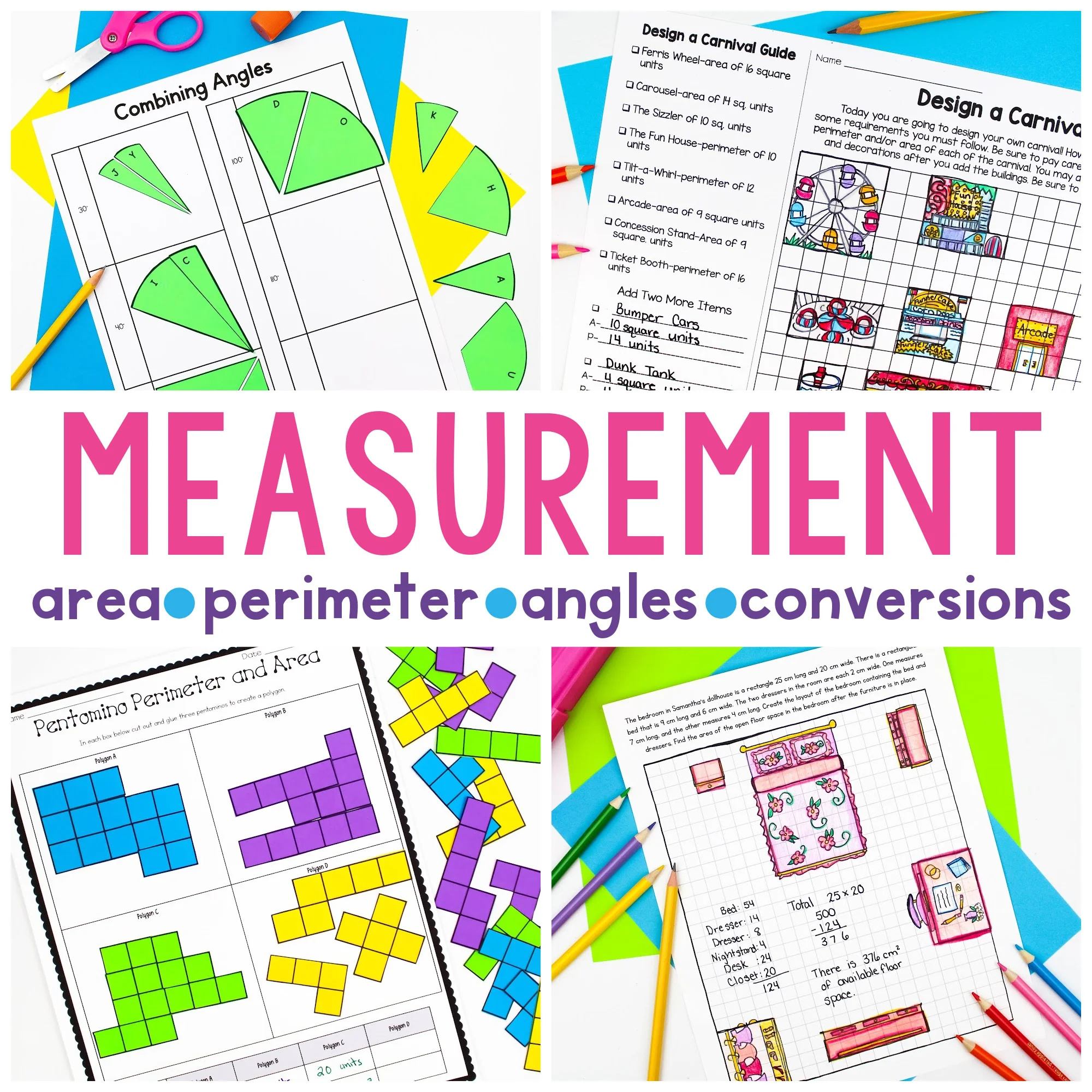
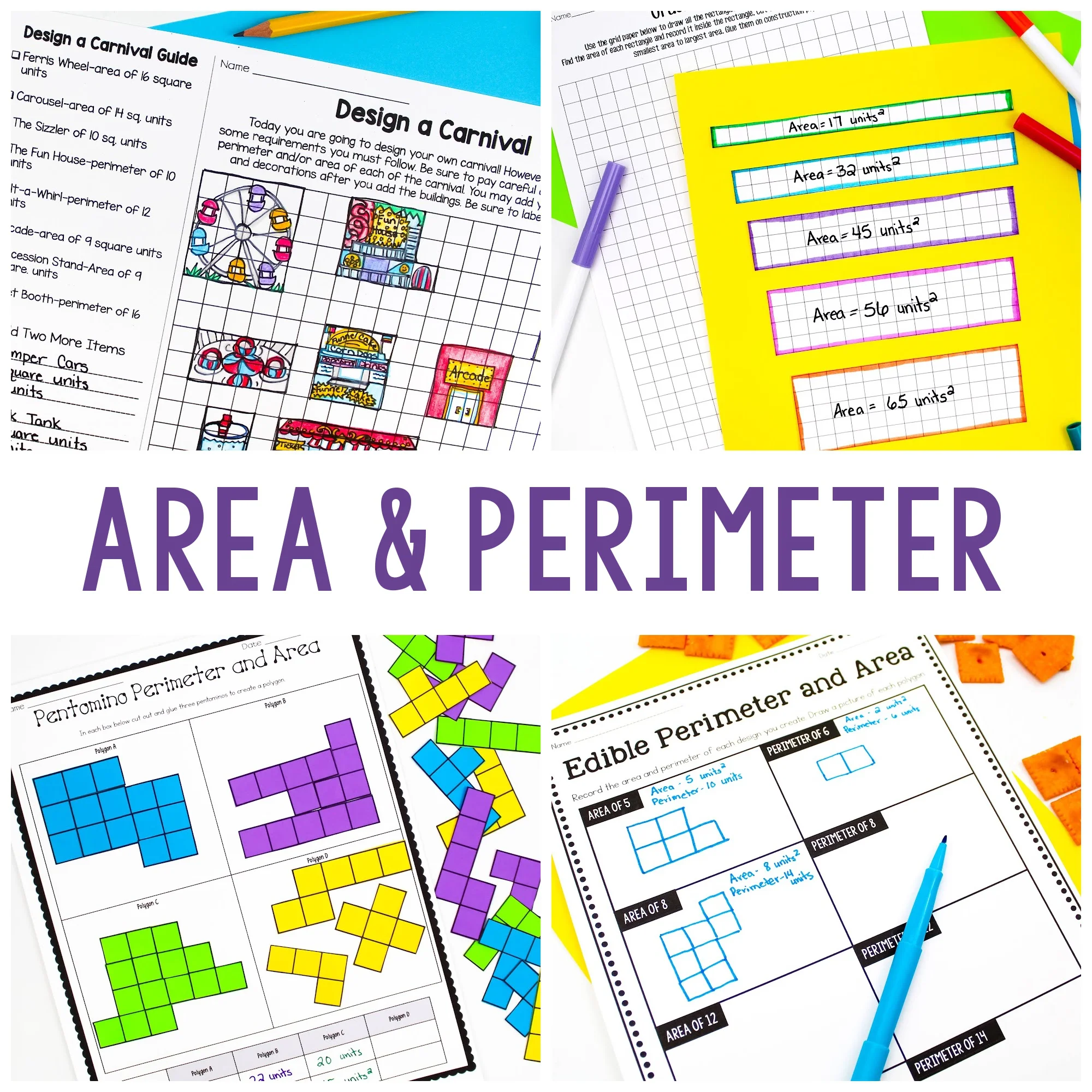
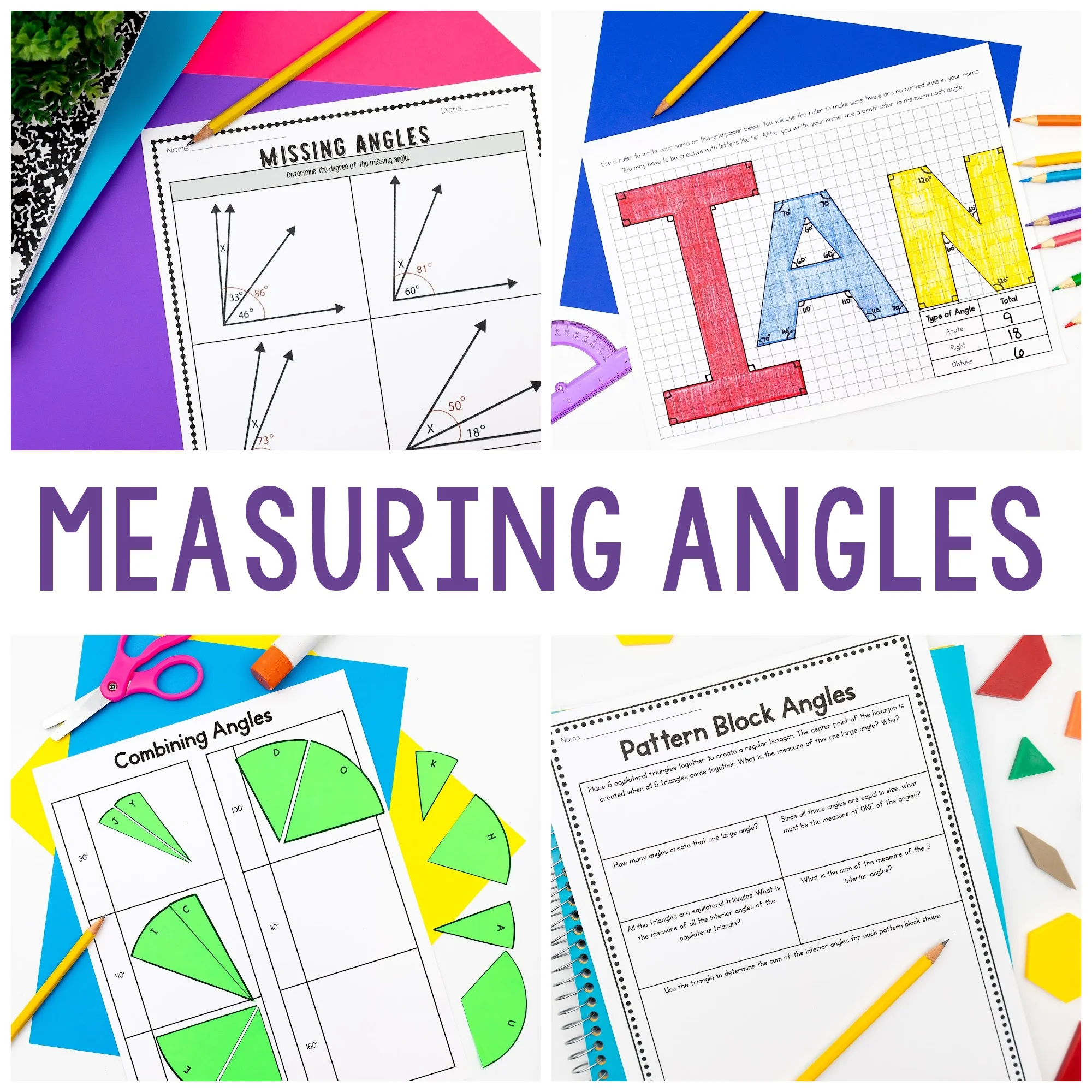
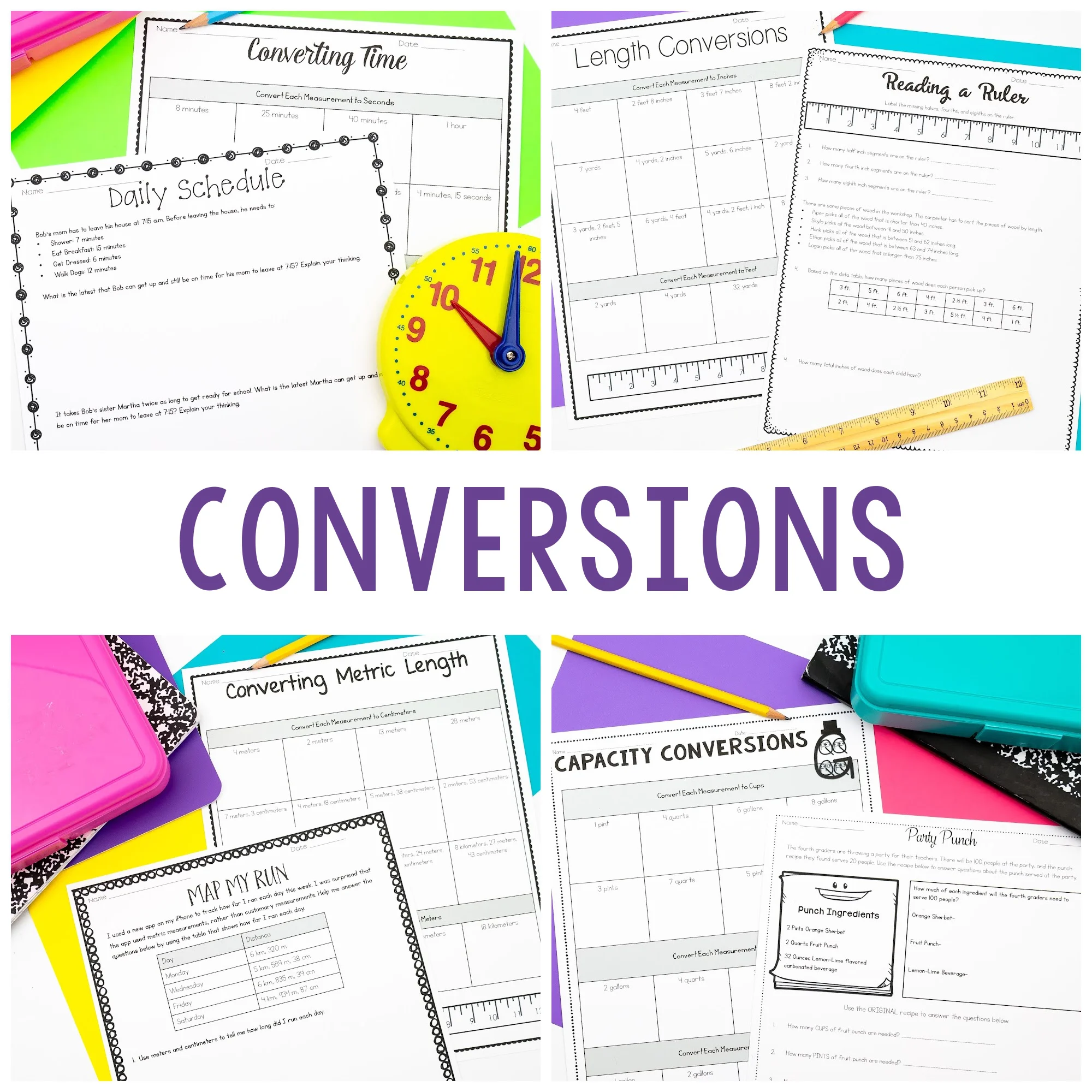
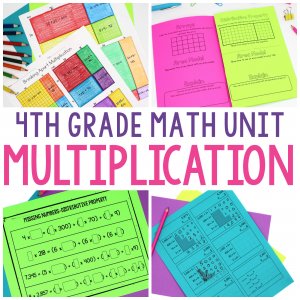
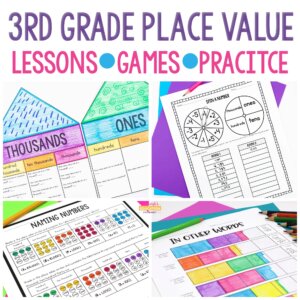
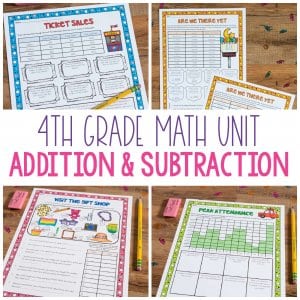
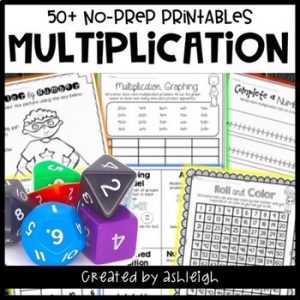
Reviews
There are no reviews yet.